Abstract
Human lymphocytes which have been purified from mononuclear leucocyte suspensions by removal of cells which adhere to nylon fibres have a reduced blastogenic response to periodate treatment as compared to the whole cell suspensions. Incubation of the purified lymphocytes on macrophage monolayers markedly enhanced their response to periodate. Periodate-treated macrophages enhance the response of purified lymphocytes to periodate more than do untreated macrophages. Stimulation of thymidine incorporation into purified lymphocytes untreated with periodate, was also noted after their incubation on periodate-treated macrophage monolayers. Chronic lymphatic leukaemia lymphocytes which have an impaired blastogenic response to periodate can be stimulated by this agent upon incubation on macrophage monolayers. Alternatively untreated chronic lymphatic leukaemia lymphocytes are stimulated on incubation on periodate-treated macrophage monolayers.
Full text
PDF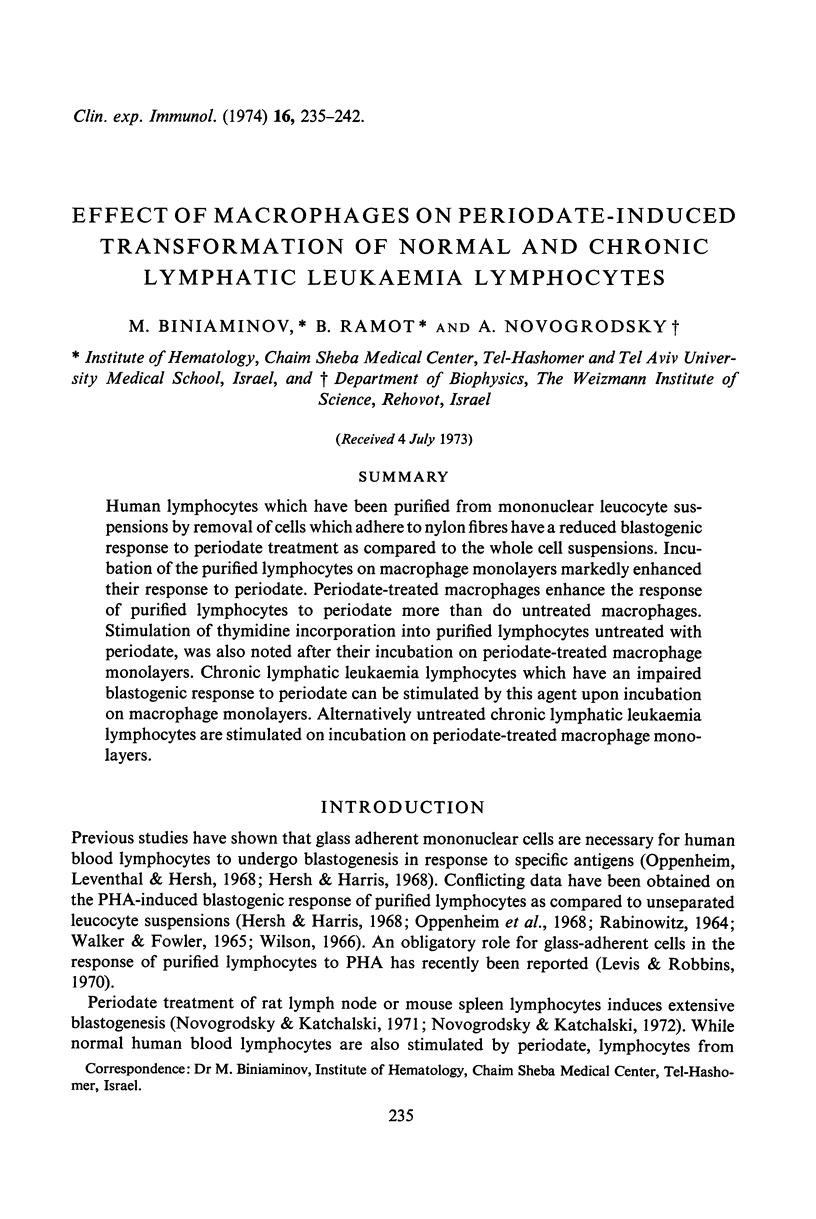
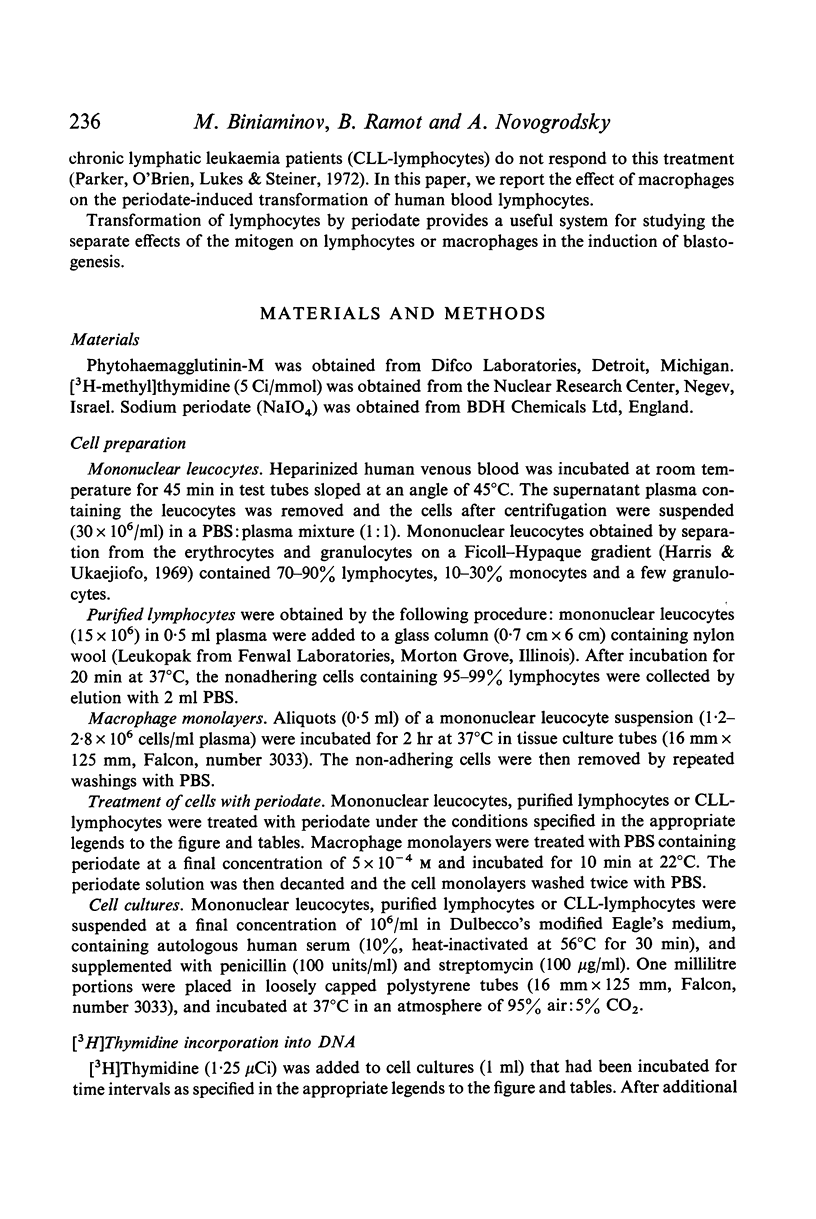
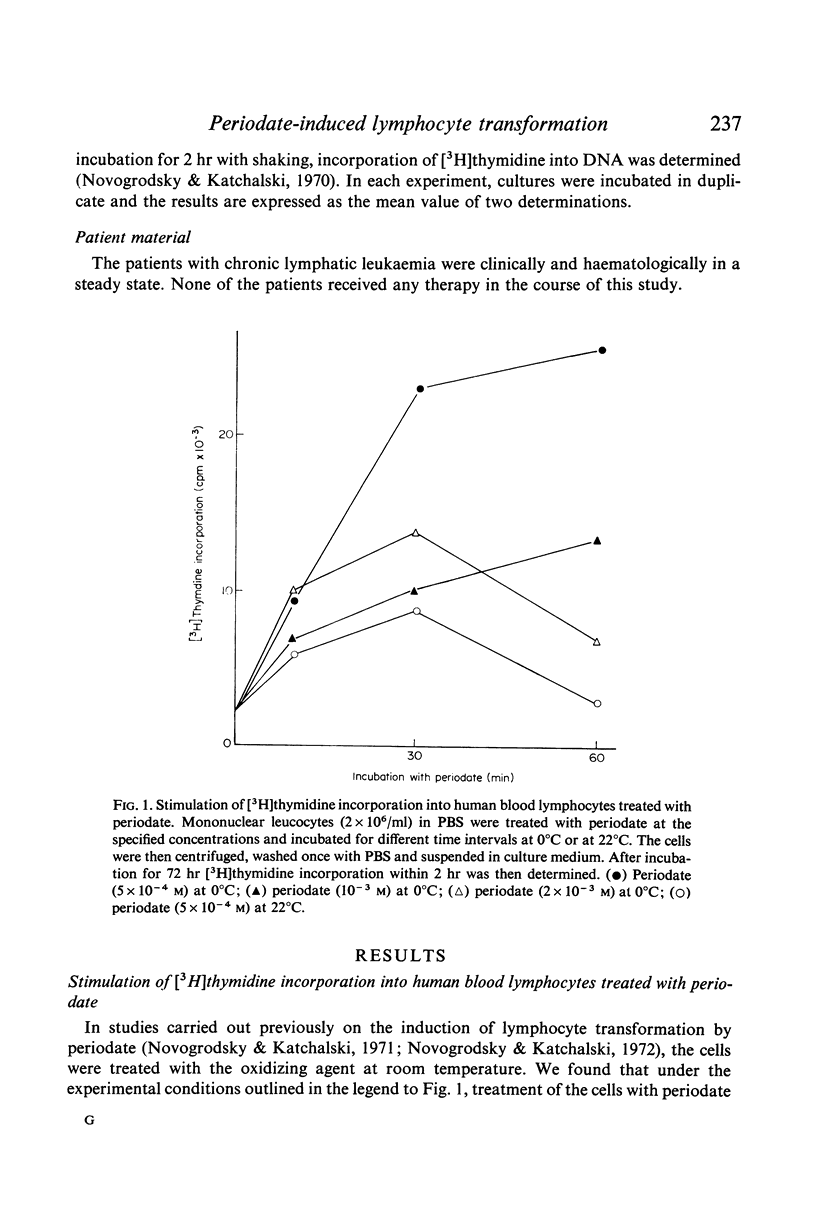
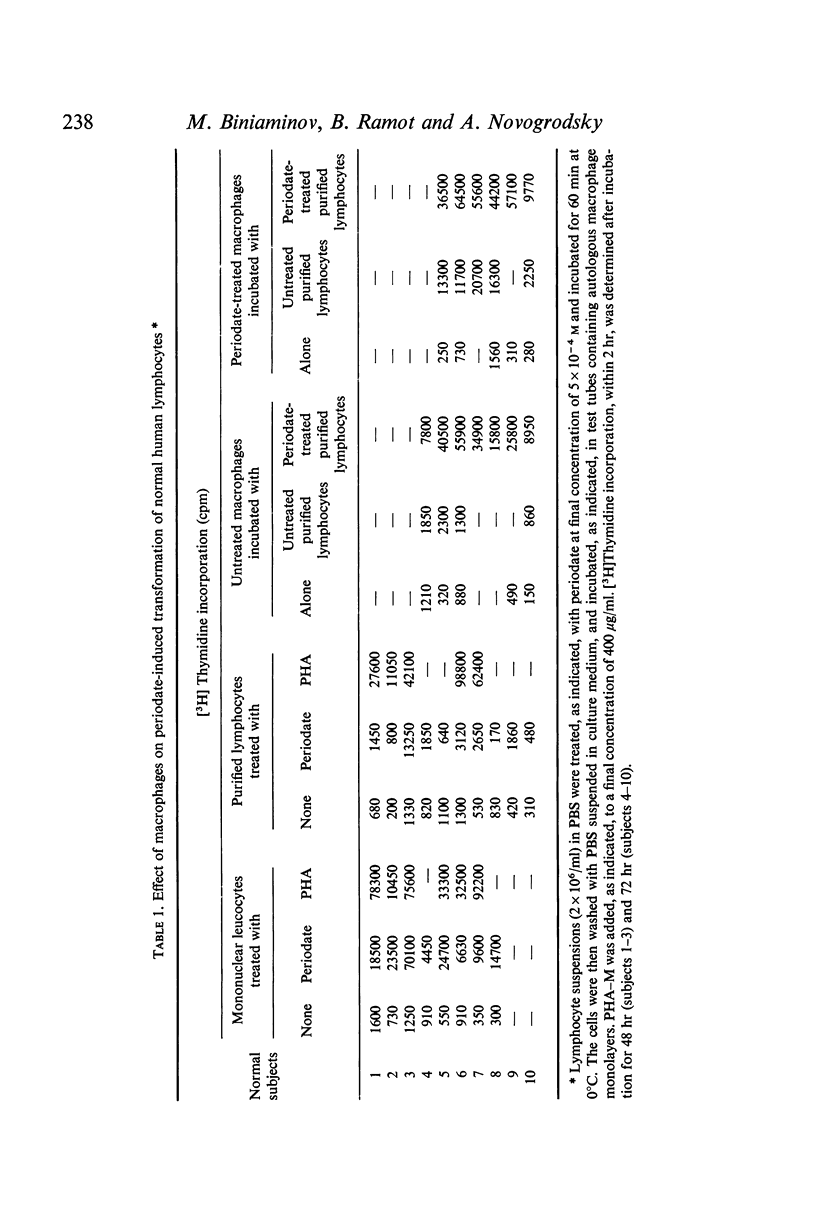
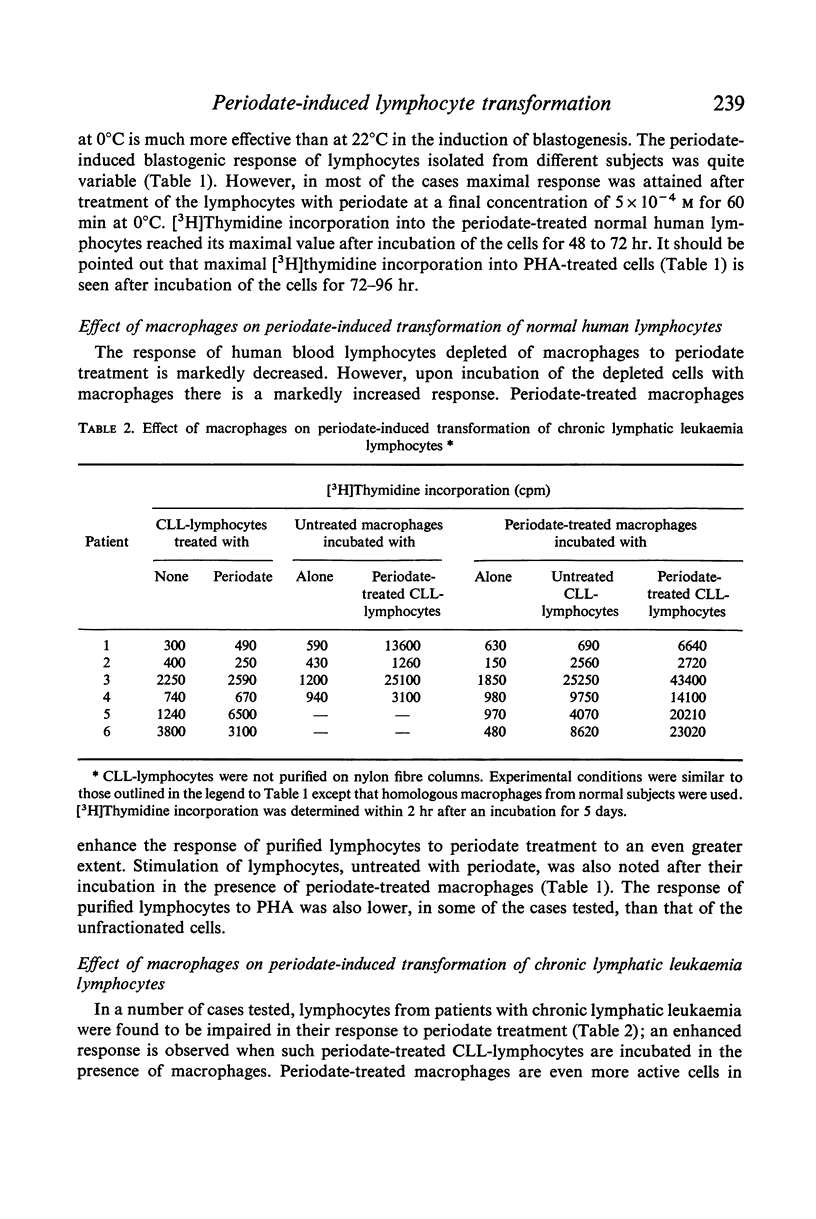
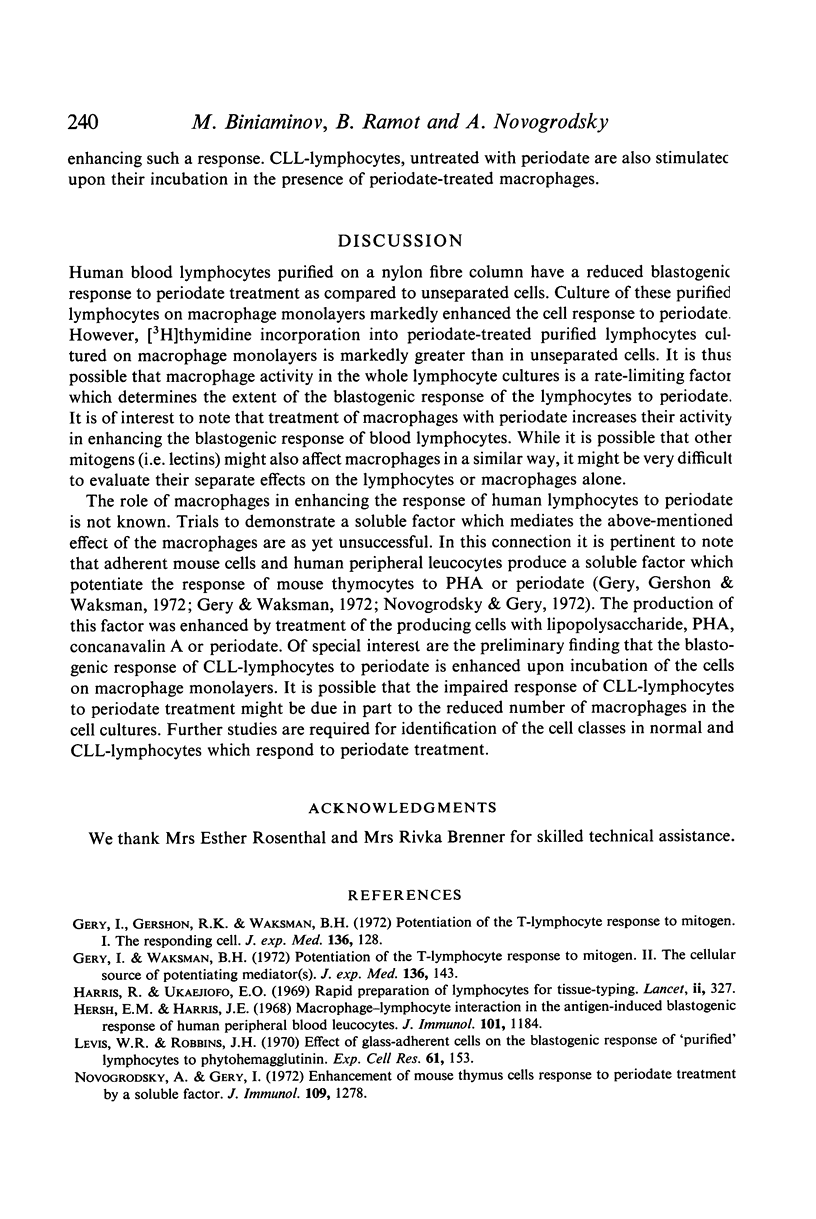
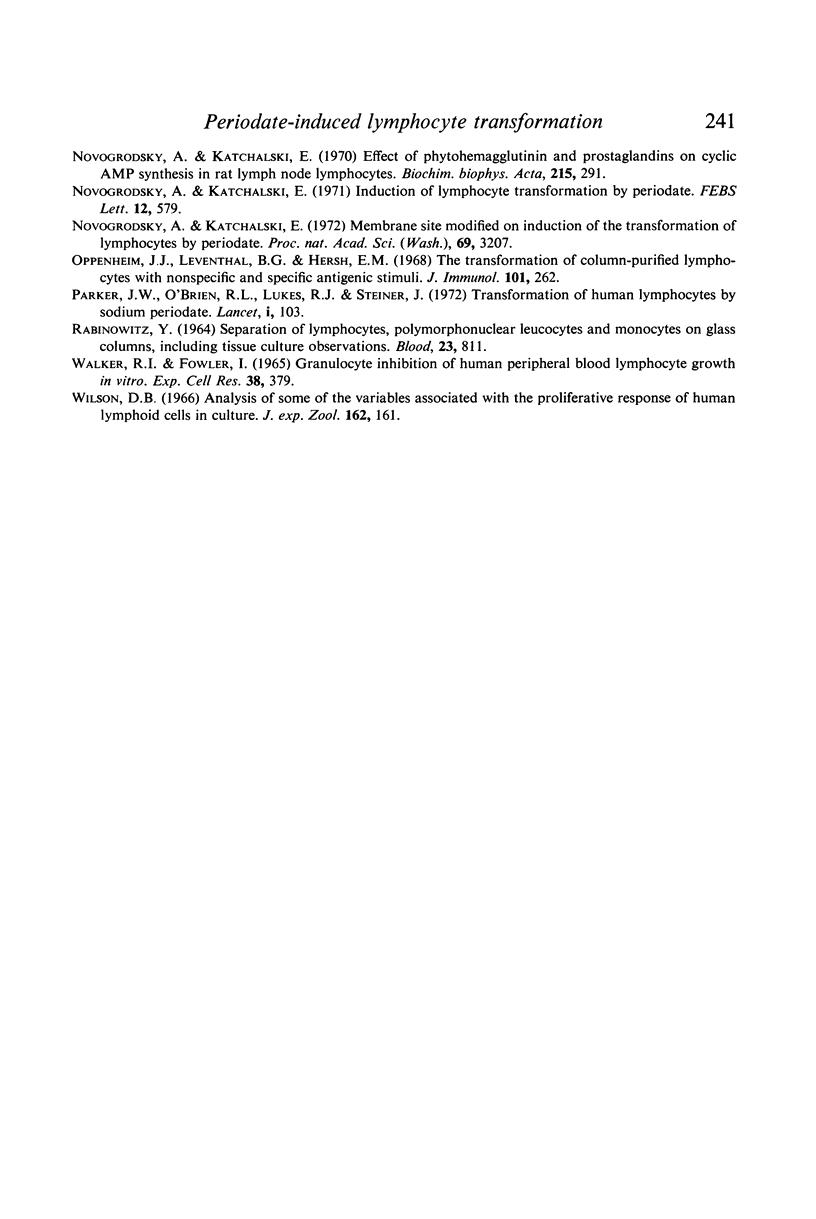
Selected References
These references are in PubMed. This may not be the complete list of references from this article.
- Gery I., Gershon R. K., Waksman B. H. Potentiation of the T-lymphocyte response to mitogens. I. The responding cell. J Exp Med. 1972 Jul 1;136(1):128–142. doi: 10.1084/jem.136.1.128. [DOI] [PMC free article] [PubMed] [Google Scholar]
- Gery I., Waksman B. H. Potentiation of the T-lymphocyte response to mitogens. II. The cellular source of potentiating mediator(s). J Exp Med. 1972 Jul 1;136(1):143–155. doi: 10.1084/jem.136.1.143. [DOI] [PMC free article] [PubMed] [Google Scholar]
- Harris R., Ukaejiofo E. O. Rapid preparation of lymphocytes for tissue-typing. Lancet. 1969 Aug 9;2(7615):327–327. doi: 10.1016/s0140-6736(69)90096-8. [DOI] [PubMed] [Google Scholar]
- Hersh E. M., Harris J. E. Macrophage-lymphocyte interaction in the antigen-induced blastogenic response of human peripheral blood leukocytes. J Immunol. 1968 Jun;100(6):1184–1194. [PubMed] [Google Scholar]
- Levis W. R., Robbins J. H. Effect of glass-adherent cells on the blastogenic response of 'purified' lymphocytes to phytohemagglutinin. Exp Cell Res. 1970 Jul;61(1):153–158. doi: 10.1016/0014-4827(70)90269-7. [DOI] [PubMed] [Google Scholar]
- Novogrodsky A., Gery I. Enhancement of mouse thymus cells response to periodate treatment by a soluble factor. J Immunol. 1972 Dec;109(6):1278–1281. [PubMed] [Google Scholar]
- Novogrodsky A., Katchalski E. Effect of phytohemagglutinin and prostaglandins on cyclic AMP synthesis in rat lymph node lymphocytes. Biochim Biophys Acta. 1970 Aug 14;215(2):291–296. doi: 10.1016/0304-4165(70)90027-9. [DOI] [PubMed] [Google Scholar]
- Novogrodsky A., Katchalski E. Membrane site modified on induction of the transformation of lymphocytes by periodate. Proc Natl Acad Sci U S A. 1972 Nov;69(11):3207–3210. doi: 10.1073/pnas.69.11.3207. [DOI] [PMC free article] [PubMed] [Google Scholar]
- Oppenheim J. J., Leventhal B. G., Hersh E. M. The transformation of column-purified lymphocytes with nonspecific and specific antigenic stimuli. J Immunol. 1968 Aug;101(2):262–267. [PubMed] [Google Scholar]
- Parker J. W., O'Brien R. L., Lukes R. J., Steiner J. TRransformation of human lymphocytes by sodium periodate. Lancet. 1972 Jan 8;1(7741):103–104. doi: 10.1016/s0140-6736(72)90115-8. [DOI] [PubMed] [Google Scholar]
- RABINOWITZ Y. SEPARATION OF LYMPHOCYTES, POLYMORPHONUCLEAR LEUKOCYTES AND MONOCYTES ON GLASS COLUMNS, INCLUDING TISSUE CULTURE OBSERVATIONS. Blood. 1964 Jun;23:811–828. [PubMed] [Google Scholar]
- WALKER R. I., FOWLER I. GRANULOCYTE INHIBITION OF HUMAN PERIPHERAL BLOOD LYMPHOCYTE GROWTH IN VITRO. Exp Cell Res. 1965 May;38:379–385. doi: 10.1016/0014-4827(65)90411-8. [DOI] [PubMed] [Google Scholar]


